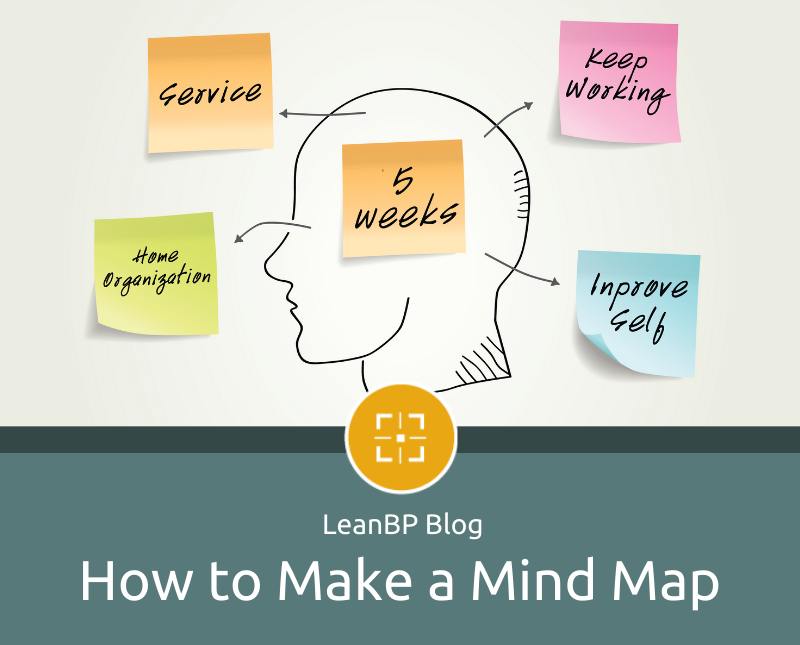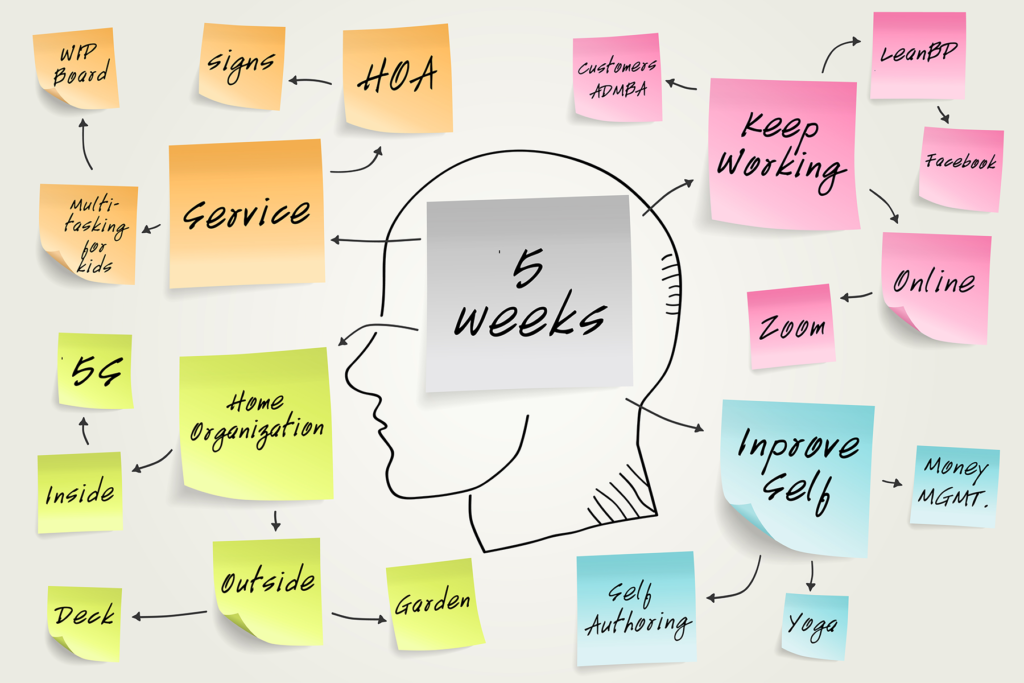
Any Harry Potter fans out there? If so, you’re familiar with the idea of a pensieve.
The wizard Albus Dumbledore uses the pensieve—a large, shallow dish, like a birdbath—to store and sort memories and ideas. Anytime he wants to retrieve a thought or relive a memory, he takes his wand and transfers that thought into the pensieve, and he sees it as clearly as the day it was formed. You could say the pensieve allows Dumbledore to save space in his mind for other things, by keeping past ideas neatly sorted and available for instant, detailed recall.
Sounds a lot like lean, when you think about it.
I recommend you make your own pensieve—but we’ll call it a mind map. It may be slightly less magical, but it’s every bit as helpful. A mind map increases situational awareness, which is the key to good decision-making.
The template I use when I teach Lean Applied to Business Processes (the Strategic Alignment & Deployment Guide) works because it’s visual—essentially, it’s a map of your mind when it comes to your job. The answers you determine at each step along the way allow you to see a standardized visual of your situation. You can see your mission and vision. You can see tangibles like customers, outputs, and policies, and intangibles like strengths, weaknesses, opportunities, and threats. This creates instant situational awareness, and you don’t have to search for answers in your mind’s eye.
I recommend that you make a mind map not just for your job, but for your life. This time of uncertainty is a great opportunity to do it, especially if you find yourself in the anxiety-inducing position of starting over.
Getting Everything on Paper
Typically, when we’re brainstorming root causes of problems in the business office, we use cause-and-effect diagrams with predetermined categories to help us see opportunities. Or we boil everything down to two categories—pros and cons.
But when you’re breaking totally new ground, or a situation seems unusually complicated, you may not have a good template to begin brainstorming. Here are some examples that I’ve experienced in my own life:
- Executing a huge project for the first time and having to explain the issues to my team and bosses
- Teaching a new course (it’s challenging each and every time)
- Helping clients start a new business—or decide not to
- Launching an academic program in a new city
Anytime I face a situation like this, I make a mind map—a visualization of all my thoughts about a topic, whether it’s an opportunity or a worry.
Here’s how you do it:
- Start by writing your overarching thought/topic/opportunity/worry in the center of the page and then write down as many considerations as you can think of.
- Don’t start with details. Mainly, stick to categories underneath your main topic as you’re first writing. But if you do find your mind stuck on a detail, write it down and connect it with a line to its category.
- Once you’ve thought of all your categories, go back and add details. Draw lines to connect them to their proper categories. This may prompt you to come up with new categories, but that’s okay—this isn’t linear. Just write everything down.
- When the ideas stop coming, don’t push too hard. Look over what you’ve done. Put it away for a while and come back to it. When more thoughts pop up, add them.
If you think better this way, share your map with others to bounce ideas around. Then come up with an action plan.
Easing Anxiety
When the COVID-19 crisis hit, I had been really excited about the work ahead in March and April; I was planning to be on the road engaged deeply with clients for six weeks straight. But on Friday, March 13, at the end of a week of teaching, all upcoming training was postponed indefinitely. On March 14, I flew home, unsure and nervous about the future.
But I’ve been teaching lean a long time, and I recognized my cue. I whipped out a piece of paper and started my new mind map, capturing on paper everything that was drifting in and out of focus in my head. In the middle of the paper, I made a circle and wrote “5 weeks”—the 5 weeks that now were uncertain. Then, all around that circle, I wrote ideas for what I could accomplish in that time frame, drawing a circle around each and linking them to the central circle with a line. Any thoughts inspired by those thoughts got new bubbles, and new lines connecting them to their related idea.
Here’s a version of what that looked like (and you could certainly use sticky notes on a whiteboard to do the same thing):

Note my categories and their details:
- Customers – make a list and check in on them
- My Business – increase blogs to weekly, engage on LinkedIn, maybe create a LeanBP Facebook page
- My Aerospace & Defense MBA Students – adjust their project schedules to accommodate the new reality
- Online Training – create Zoom training classes, create Yellow Belt online training and certification, figure out polling during online sessions
- Inside-the-Home Projects – 5S all rooms, finish all open projects, paint rooms, redo bathroom
- Outside-the-Home Projects – garden to my heart’s content
- Money Management – list ways to cut costs and manage expenses
- Community and Family – come up with ways to be of service in this time of crisis
- Self-Care – schedule my yoga and resistance routine, cook for my family, engage in Jordan Peterson’s Self Authoring program
Within 45 minutes I had everything I could think of on one page. It was a great relief! Any time a little anxiety about the future popped up, I could go back to that sheet and look at all the proactive things I could do instead of worrying. And I did. As a result, I’ve been very productive over the past 5 weeks, with my activities list growing and taking me even further into the future than I originally planned.
So . . . what’s on your mind? Whatever it is, get it out of there and onto paper. Next week, I’ll share how to accomplish your ideas in a productive and organized way.
New Online Training Coming Up
One of my mind map to-dos is now a reality! I’m offering a 15-hour online Lean Yellow Belt Training and Certification through the University of Tennessee Haslam College of Business. You can take the course three hours a day for a week or 1.5 hours a day for two weeks; you’ll have a homework assignment (from the blue line) and demonstrate the use of four lean tools I’ll teach you. Earn your Lean Yellow Belt plus 15 hours towards your Green Belt. More info coming soon, but reach out to me at bill@leanbp.com if you’re interested.

Nice piece. Thanks for reminding me of this very useful tool, as well as, its appropriateness during current times.
Comments are closed.